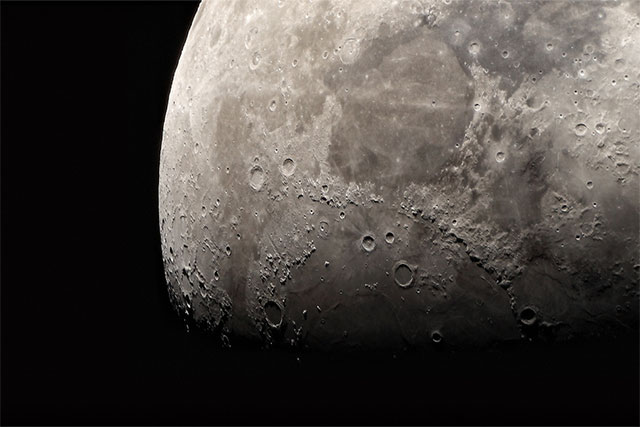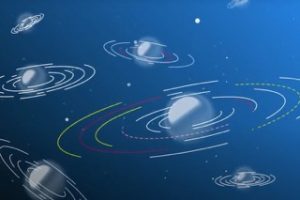The Birth of a Gas Giant Planet Observed
Scientists have used infrared camera to observe a gas giant planet that is still in the process of formation

These are the Moon’s maria or, in the singular, lunar mare (Latin word for sea), which cover about 17% of the lunar crust. The image shows the two major environmental features of the lunar surface, the bright and heavily cratered highlands (or terrae) and the smooth dark maria. Since, these plains are darker than the bright highlands the early observers interpreted them as water seas.
Lunar basalts are less porous than the anorthosites, so highland’s craters are generally deeper than maria’s ones. However, craters may be degraded by the cumulative effects of small impacts. Currently the evolution of the lunar landscape is dominated by the occasional impact craters, since in the absence of an atmosphere there is no erosive agents such as winds and rain. The relatively low number of craters in the maria is an indication of young ages.
The lunar maria have aroused the curiosity of people of different places and cultures along the time. The man in the Moon, the Moon rabbit, and Saint George killing the dragon are examples of lunar pareidolia. From the point of view of science, lunar samples from Appolo and Luna missions provide important, but insufficient data to disentangle the thermal history and evolution of the Moon. For instance, most lunar mare has not been sampled and data for these mare basalts are derived only by remote sensing, impact crater counts, and crater degradation. Studies of ages and chemical composition of the basaltic lunar maria may provide clues on the Moon’s internal formation and evolution. The acquired knowledge can be extended to develop evolutive models for distant moons and planets. In addition, geologic maps may be used in the preparation of future missions.
The highlands formed very early while the Moon’s surface was molten. In the early phase of the Moon formation its outer layers, heated by the kinetic energy of impacting bodies and the decay of radioactive elements, were molten forming a global magma ocean. The densest minerals such as iron and magnesium silicates crystallized and sank after the cooling of the magma ocean. Then, the less dense minerals such as anorthositic plagioclase feldspar crystallized and floated to the magma surface forming an anorthosite crust. Anorthosite is the most abundant and oldest rock on the lunar crust.

Scientists have used infrared camera to observe a gas giant planet that is still in the process of formation

Cloud Technology Researcher José Luis Vázquez-Poletti on data storage in computing clouds, creating new virtua...

Physicist Max Tegmark on using mathematics to explain the Universe, and how we could develop software to map a...